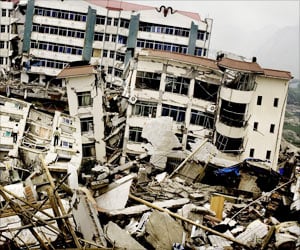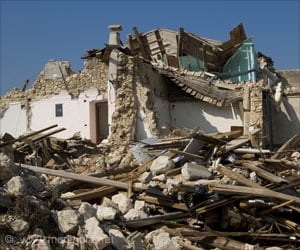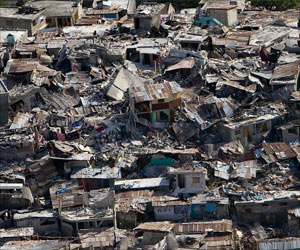More than half of the Haiti's largest university hospital in the already poor nation was destroyed in the 2010 disaster that killed more than 200,000 people.

A $50 million reconstruction process, financed in equal parts by France and the United States, began in earnest two years ago and is due to end in late 2017.
French President Francois Hollande is due to visit next week, but it is clear that much remains to be done -- while the harried staff struggle to keep services running.
Carine Cleophat has worked at the hospital for more 20 years. She is head of radiology, but finds herself dealing with all sorts of disruptions as she makes her rounds.
Here, she shoos away a man selling fans. There she tells a woman lounging on a bench to sit up. Now she remonstrates with a motorcyclist who honked his horn on hospital grounds.
The hospital’s structure may be dilapidated, but she is battling to make order from chaos.
Advertisement
The cramped conditions will last another two years, and there is one more major problem that wouldn’t trouble hospitals in the developed world: "We have electrical cuts."
Advertisement
"Here, at the temporary hospital, we don’t even have a generator," complains Cleophat.
"So we just have to wait until EDH resumes service each time. It can last for hours."
Nevertheless, for most of Haiti’s largely poor population, the HUEH hospital is their only source of serious medical care, despite the construction work going on all around.
Most of the services had to be moved to the neighboring former military hospital, which has been opened to the civilian public for nearly a year.
"We receive 80 to 100 people each day but only have four offices for appointments," says Yolaine Paultre Bijou, assistant head of dermatology.
- Power cuts -
The rooms are partitioned by floral print curtains.
"Several doctors work here at the same time. There is no privacy," said Bijou.
"How can you speak normally with a patient when everyone else can hear you? We cannot provide quality care in such a limited space."
The hospital’s director, Maurice Fils Mainville, points to another problem: holding on to qualified staff in a country with a history of emigration.
"There are more Haitian doctors in New York State than in the Haitian Republic," he said.
Nevertheless, he finds ground for optimism in the foreign-financed reconstruction.
"The general hospital was more than 80 years old," he explains. "Rebuilding it with modern buildings and a water purification center is a true step forward."
Source-AFP








